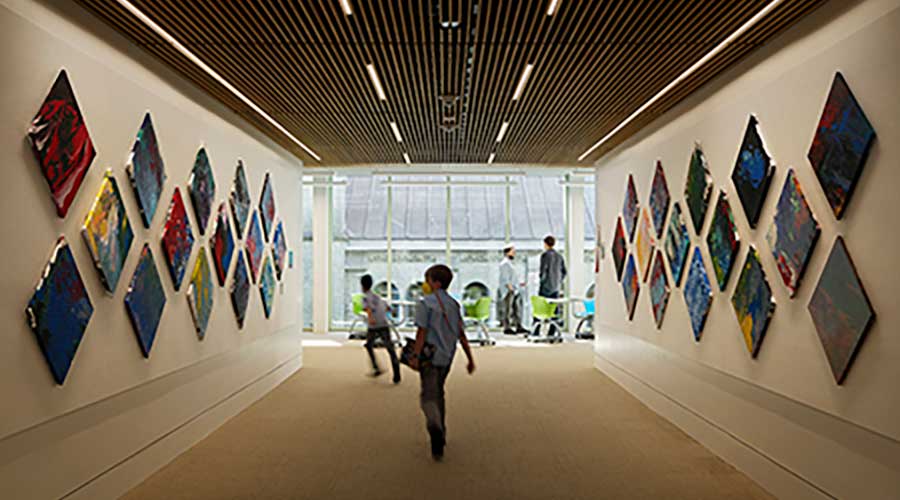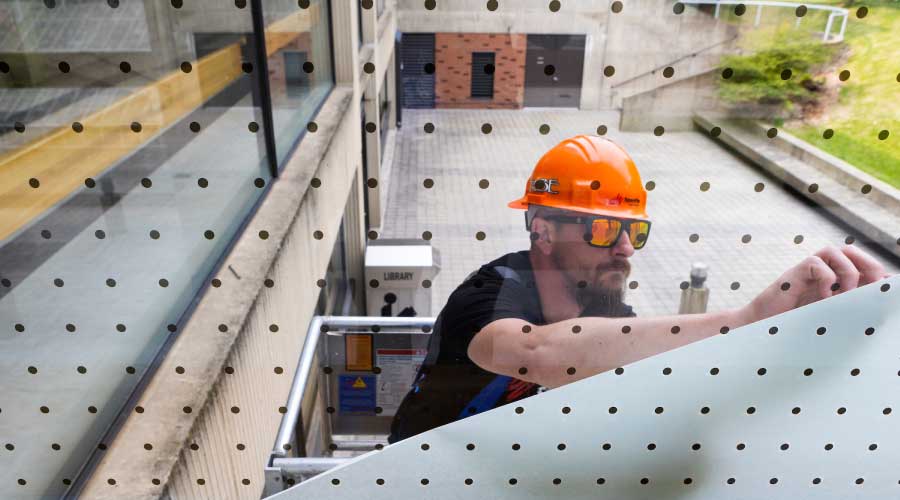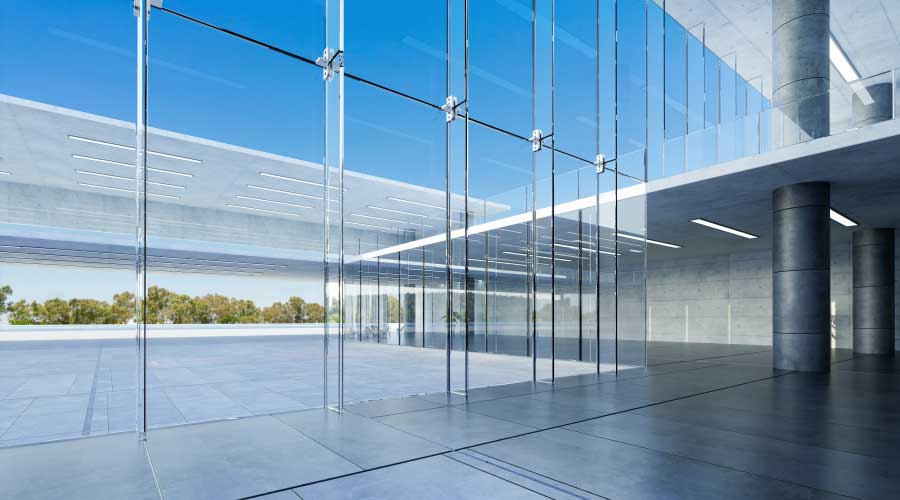Exterior Insulation and Finish Systems: Components and Benefits
In the 1950s, a cost-effective, attractive and efficient new cladding was developed in Europe: exterior insulation and finish systems (EIFS). By the late 1960s, EIFS had crossed the Atlantic Ocean, and U.S. facilities started installing these systems, first on new commercial buildings then in residential settings.
Over the years, the technology has evolved dramatically. Today's EIFS, sometimes referred to as "synthetic stucco," can be used in new construction or as a retrofit on existing buildings. These multilayered exterior wall systems offer a range of benefits:
- Superior energy efficiency thanks to insulating qualities that reduce thermal loads on the exterior building walls
- Lightweight construction
- Cost-effective installation and maintenance
- Wide aesthetic latitude that permits installers to sculpt the foam-like material into shapes and patterns.
This lightweight cladding can mimic the appearance of many building materials, replacing a variety of other common cladding options, including brick, stone, metal panels and siding, applied over a backup wall.
"An EIFS typically takes the form of stucco, but it effectively can replicate brick, stone, granite and marble, as well as other finishes," says Quenton Roehricht, brand manager at Parex USA. "It can be used to match any number of shapes and also is highly versatile in application, as it can be used over many existing claddings as a substrate."
Economy and Environment
Today, EIFS account for nearly 30 percent of the U.S. commercial exterior wall market, and for good reason, according to Roehricht.
"The two primary things that face the construction industry, and the world as a whole, are the shift in economic focus and the environment," he says. "With buildings being a primary consumer of energy, designers and owners likely will face more scrutiny on how much energy each building consumes. EIFS provide an easy solution for new and existing buildings to improve energy efficiency. In today's cost-conscious environment, building owners and designers also are going to find it difficult and costly to specify certain materials going forward. EIFS provide easy solutions to replicate the look of many of these materials without the expensive associated costs."
The potential for EIFS construction expanded even further this past year when Section 1408 of the 2009 International Building Code added EIFS as a code-approved exterior wall cladding when the system is installed in accordance with manufacturer's instructions; special inspections of non-drainage systems are also required when EIFS are applied to surfaces other than masonry or concrete walls. Prior to 2009, EIFS were not mentioned in national codes and were considered an alternate material.
While each EIFS manufacturer has its own proprietary manufacturing process, a standard EIFS installation consists of five basic components, which are installed over a backup wall:
- Insulation board made from polystyrene or polyisocyanurate foam
- A specially formulated adhesive or mechanical attachment to join the insulation to the substrate
- Glass-fiber reinforcing mesh
- A water-resistant base coat that is applied on top of the insulation to serve as a weather barrier
- A finish coat that typically uses colorfast and crack-resistant acrylic co-polymer technology.
The majority of EIFS specified today fall into the category of "water-drainage" EIFS, which often include a fluid-applied, air- and water-resistive barrier component covering the sheathing and adjacent openings. "When fluid-applied barriers are used, the EPS can be adhesively attached to the sheathing, whereby wind load is transmitted directly to the sheathing. This provides a higher wind load capacity, enabling the use of water-drainage EIFS on mid and high rise construction," says Kent Stumpe, marketing communications manager at BASF Construction Chemicals.
According to Gary Zwayer, a principal at Wiss, Janney, Elstner Associates, local customs, product availability and contractor workload in the region can influence actual costs for installed building cladding.
With geographical differences in mind, the numbers still do show that EIFS are a cost-effective cladding in terms of material and installation.
"Also, when true cost of ownership is factored in the equation, building owners can see even greater benefits with EIFS from reduced utility bills," Roehricht says, stressing contribution of EIFS to energy efficiency.
Study finds EIFS advantages compared to other options
The energy-efficiency properties of EIFS have received a strong vote from a study conducted by researchers at Oak Ridge National Laboratory (ORNL).
The two-phase study, sponsored by the U.S. Department of Energy through the Office of Energy Efficiency and Renewable Energy's Building Technologies Program and EIMA — the EIFS Industry Members Association — showed EIFS outperformed brick, stucco and cementitious fiberboard siding. Tests measured energy efficiency, moisture intrusion and temperature control in identical, side-by-side field installations near humid Charleston, S.C., between January 2005 and June 2007.
Researchers performed testing on a building that featured exterior wall panels made from the various claddings and assemblies. Each panel was fitted with an array of sensors to provide a full profile of temperature, heat flux, relative humidity and moisture content values. Data was collected around the clock and was transmitted back to the ORNL research facility in Oak Ridge, Tenn., for extensive analysis.
Simulated building envelope defects were introduced into some of the wall panels during the moisture study so that researchers could assess cladding assembly performance in the presence of water penetration, the impact of moisture infiltration, and the performance of various exterior cladding systems and water-resistive barriers.
In a summary of research findings, the study was noted to demonstrate the "superior moisture and temperature control performance of EIFS" in comparison to the other types of exterior claddings studied.
Key findings included:
- EIFS with 4 inches of foam outside the stud cavity, a liquid-applied, water-resistive barrier coating, and no insulation in the stud cavity was the best-performing wall configuration.
- EIFS absorbed little moisture and maintained a consistent, acceptable moisture level within the cladding, despite varying outdoor conditions.
- EIFS with drainage and a liquid-applied, water-resistive barrier coating readily dispersed liquid water and moisture introduced by flaws in the building envelope.
- Liquid-applied, water-resistive barrier coatings outperformed sheet goods. Additionally, EIFS with water-resistive barrier coatings performed significantly better than other claddings that used building paper or spun-bonded polyolefin membranes.
|
Related Topics:












